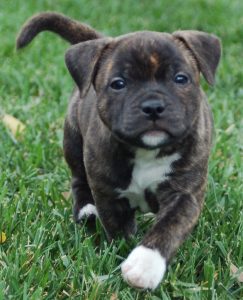Helping your dog recover quickly and safely after an illness or injury is crucial for their well-being. By providing the right care, nutrition, and environment, you can speed up their recovery process and ensure they return to their happy, healthy selves. This guide outlines the essential steps and tips for assisting dogs in quick recovery after illness or injury.
1. Follow Veterinary Advice
– Consult Your Veterinarian:
- Always follow your veterinarian’s advice and instructions regarding your dog’s recovery. This includes medication schedules, follow-up appointments, and activity restrictions.
– Ask Questions:
- Don’t hesitate to ask your veterinarian questions about your dog’s condition, treatment plan, and expected recovery timeline. Understanding these aspects can help you provide better care.
2. Administer Medications Properly
– Stick to the Schedule:
- Administer medications exactly as prescribed. Set reminders if necessary to ensure you don’t miss any doses.
– Use Pill Pockets or Treats:
- If your dog is reluctant to take pills, use pill pockets or hide the medication in a small amount of their favorite food.
– Monitor for Side Effects:
- Keep an eye on your dog for any side effects or adverse reactions to the medication. Report any concerns to your veterinarian immediately.
3. Create a Comfortable Resting Area
– Quiet and Cozy Space:
- Provide a quiet, comfortable resting area for your dog. Use a soft bed or blanket in a low-traffic area of your home.
– Easy Access to Essentials:
- Ensure your dog has easy access to water, food, and their favorite toys without needing to move too much.
4. Maintain Proper Nutrition
– Balanced Diet:
- Feed your dog a balanced, nutritious diet to support their recovery. Consult your veterinarian about any special dietary needs.
– Small, Frequent Meals:
- Offer small, frequent meals if your dog has a reduced appetite. This can help maintain their energy levels and prevent nausea.
– Hydration:
- Ensure your dog stays well-hydrated. Encourage them to drink water regularly, and offer ice cubes if they are reluctant to drink.
5. Monitor Physical Activity
– Limit Exercise:
- Restrict your dog’s physical activity as advised by your veterinarian. Avoid vigorous exercise and long walks until your dog is fully recovered.
– Short, Controlled Walks:
- If your veterinarian allows, take your dog on short, controlled walks to prevent stiffness and promote gentle movement.
– Use a Leash:
- Always use a leash during walks to control your dog’s movements and prevent them from overexerting themselves.
6. Provide Mental Stimulation
– Interactive Toys:
- Offer interactive toys and puzzles to keep your dog mentally stimulated while they recover. This can help prevent boredom and anxiety.
– Gentle Playtime:
- Engage in gentle playtime activities that do not require much physical exertion, such as tug-of-war with a soft toy.
7. Regular Health Monitoring
– Check Vital Signs:
- Regularly check your dog’s vital signs, including temperature, pulse, and respiration rate. Report any abnormalities to your veterinarian.
– Observe Behavior:
- Monitor your dog’s behavior for signs of pain, discomfort, or changes in appetite and energy levels.
– Follow-Up Appointments:
- Keep all follow-up appointments with your veterinarian to ensure your dog is progressing well in their recovery.
8. Wound and Incision Care
– Keep Clean and Dry:
- Keep any wounds or surgical incisions clean and dry. Follow your veterinarian’s instructions for cleaning and dressing changes.
– Prevent Licking:
- Use an Elizabethan collar (e-collar) or alternative protective gear to prevent your dog from licking or chewing at their wounds.
– Watch for Infection:
- Look out for signs of infection, such as redness, swelling, discharge, or foul odor. Contact your veterinarian if you notice any of these symptoms.
9. Use Physical Therapy Techniques
– Gentle Massage:
- Gently massage your dog’s muscles to improve circulation and reduce stiffness. This can be particularly helpful for dogs recovering from orthopedic injuries.
– Range of Motion Exercises:
- Perform range of motion exercises as recommended by your veterinarian or a canine physical therapist to maintain joint flexibility.
10. Emotional Support and Reassurance
– Stay Calm and Positive:
- Your dog can sense your emotions. Stay calm and positive to provide reassurance and comfort during their recovery.
– Spend Quality Time:
- Spend quality time with your dog, offering plenty of affection and gentle petting. This can help reduce stress and promote healing.
Conclusion
Assisting your dog in a quick recovery after illness or injury involves a combination of following veterinary advice, providing proper nutrition, maintaining a comfortable environment, and monitoring their health closely. With patience, care, and attention to detail, you can help your dog regain their health and return to their active, happy life.
FAQs
1. How long does it take for a dog to recover from surgery?
- Recovery time varies depending on the type of surgery and the dog’s overall health. Your veterinarian will provide a specific timeline and guidelines for your dog’s recovery.
2. What should I do if my dog refuses to take medication?
- Try hiding the medication in a small amount of their favorite food, using pill pockets, or asking your veterinarian about alternative forms of the medication.
3. How can I tell if my dog is in pain during recovery?
- Signs of pain in dogs include whimpering, reluctance to move, changes in appetite, and unusual aggression or restlessness. Contact your veterinarian if you suspect your dog is in pain.
4. Can I give my dog human pain medications?
- Never give your dog human medications without consulting your veterinarian. Some human medications can be toxic to dogs.
5. What are the signs of infection in a surgical incision?
- Signs of infection include redness, swelling, discharge, and foul odor. If you notice any of these symptoms, contact your veterinarian immediately.


